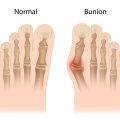Understanding AAC and Its Role in Communication
What is Augmentative and Alternative Communication (AAC)?
AAC stands for Augmentative and Alternative Communication. It includes all the ways people communicate besides talking. This can be anything from using gestures, facial expressions, or pictures to high-tech devices that speak for someone. AAC helps people who have difficulty speaking or writing because of conditions like autism, cerebral palsy, stroke, or other disabilities.
Why AAC Matters in American Communities
In the United States, we value diversity and inclusion. Many Americans come from different backgrounds and have unique communication needs. AAC supports individuals by giving them a voice, helping them participate fully in school, work, family life, and their communities. Using AAC can break down barriers and create more opportunities for independence and social connection.
Types of AAC: No-Tech to High-Tech
| Type of AAC | Description | Examples |
|---|---|---|
| No-Tech | Does not use any devices or technology | Gestures, body language, pointing, sign language |
| Low-Tech | Simple tools that do not need batteries or electricity | Picture boards, communication books, letter boards |
| High-Tech | Electronic devices that produce speech or text | Speech-generating devices (SGDs), tablets with communication apps |
Who Benefits from AAC?
AAC can help anyone who has trouble communicating with speech alone. This includes children learning to talk, adults recovering from injuries or illnesses, and seniors experiencing age-related conditions. In American settings like schools, hospitals, workplaces, and at home, AAC tools make sure everyone’s voice can be heard—no matter their abilities.
The Importance of Culturally Responsive AAC Support
America’s diverse population means that AAC solutions need to fit different languages and cultures. For example, picture symbols may need to show foods common in Hispanic or Asian families. Devices might need to offer voice options in English and Spanish. By respecting cultural differences, AAC becomes more effective and meaningful for users across the country.
Assessing Individual Communication Needs
Understanding each AAC (Augmentative and Alternative Communication) users unique needs is the first step to building effective communication strategies. Since everyone communicates differently, its important to take time to discover what makes each person special. In this section, well explore how to identify strengths, challenges, and preferences so you can create personalized plans that truly fit into daily American life.
Discovering Strengths
Everyone has their own set of communication skills. Some AAC users might be great at recognizing pictures, while others remember words or symbols better. Start by observing how the individual naturally communicates. Do they point, gesture, make sounds, or use facial expressions? These strengths are the foundation for building successful AAC strategies.
Common Communication Strengths
| Strength Area | Examples | How to Support |
|---|---|---|
| Visual Recognition | Identifies pictures or symbols quickly | Use symbol-based AAC boards or apps |
| Auditory Processing | Responds well to spoken prompts | Add voice output features to AAC devices |
| Motor Skills | Can press buttons or tap screens easily | Select devices with touchscreens or large buttons |
| Social Engagement | Loves interacting with others | Include social scripts for greetings and small talk in the AAC system |
Identifying Challenges
No two people face the same obstacles. Its important to notice any difficulties the user may have. Are certain buttons hard to reach? Is it tough for them to remember where things are on their device? Recognizing these challenges early helps you adjust the AAC setup so communication feels easier and more natural.
Common Challenges and Solutions
| Challenge | Solution Example |
|---|---|
| Trouble with fine motor control | Use keyguards or larger icons on devices |
| Easily distracted in busy environments | Create simple, focused communication boards for specific settings like school or home gatherings |
| Limited vocabulary understanding | Add familiar images and practice using new words during real-life activities like grocery shopping or ordering food at restaurants |
| Anxiety when communicating with strangers | Add quick-access phrases for common situations like “I need help” or “Thank you” on the main screen of the AAC device/app |
Considering Preferences and Daily Environments
AAC works best when it fits smoothly into someones everyday life. Talk with users and their families about what feels comfortable. Maybe they prefer using a tablet over a speech-generating device, or maybe they want different setups for home and school. Pay attention to where and when communication happens most often—whether at the dinner table, during Zoom calls with relatives, or out in the community.
Questions to Guide Your Assessment:
- What activities does the user enjoy?
- Where do most conversations happen?
- Who are their main communication partners?
- What makes them feel confident?
- Are there specific times of day when communicating is harder?
- Which technology feels easiest for them to use?
The answers will help you build a custom approach that makes communication meaningful every day.
![]()
3. Building Communication Skills Through Everyday Activities
Integrating AAC in Daily Routines
Using Augmentative and Alternative Communication (AAC) can become a natural part of everyday life. By weaving AAC into regular routines at home, school, and in the community, individuals have more chances to practice communication and build confidence. Here are some practical strategies to help everyone get involved and make AAC use feel easy and fun.
At Home: Make Communication Part of Daily Life
Everyday tasks at home offer great opportunities for AAC users to express themselves. For example, mealtime, getting dressed, or family game nights can all become moments to encourage communication. Try asking simple questions like “What do you want to eat?” or “Which shirt do you want to wear?” and give time for responses using the AAC device.
| Activity | AAC Strategy | Example Phrases |
|---|---|---|
| Mealtime | Offer choices, comment on food | “Do you want juice or milk?” “Yummy!” “More please” |
| Getting Ready | Ask for preferences, label items | “Which shoes?” “This is your jacket” “All done” |
| Family Games | Encourage turn-taking, cheer on others | “My turn” “Good job!” “Lets play again” |
At School: Fostering Participation in Classrooms
AAC helps students take part in classroom activities just like their peers. Teachers and support staff can prompt AAC use during lessons, group work, or even during lunch breaks. It’s important to create a supportive environment where everyone feels comfortable trying out new ways to communicate.
- Morning Meetings: Let students use AAC to share how they’re feeling or what they did yesterday.
- Group Projects: Encourage using AAC for brainstorming ideas and making decisions together.
- Class Discussions: Give extra wait time so everyone can join in with their thoughts using their device.
In the Community: Encouraging Real-World Engagement
The community offers endless chances for meaningful communication with different people. Practice ordering food at a restaurant, greeting neighbors, or shopping at the grocery store using AAC tools. The key is to prepare ahead—think about what words or phrases might be useful in each situation.
| Setting | AAC Opportunities | Phrases to Try |
|---|---|---|
| Restaurant | Ordering food, thanking staff | “I want chicken” “Thank you” |
| Parks & Recreation | Requesting turns, talking about play equipment | “Can I swing?” “Slide please” |
| Stores | Asking for help, naming items to buy | “Where is the milk?” “I need apples” |
Tips for Success Across Settings:
- Modeling: Family members, teachers, and friends should also use the AAC system to show how it works.
- Praise Attempts: Celebrate every try—even if it’s not perfect!
- Create Opportunities: Give lots of chances throughout the day for the individual to use their AAC device.
- Be Patient: Allow enough time for responses without rushing or finishing sentences for them.
- Simplify Choices: Offer clear options when possible to reduce overwhelm and build confidence.
By naturally blending AAC into daily routines at home, school, and around town, communication becomes more meaningful and enjoyable. These small steps lead to big progress in developing true communication competence through AAC.
4. Collaborating with Families and Support Teams
Why Collaboration Matters in AAC Success
Building strong communication skills with Augmentative and Alternative Communication (AAC) isn’t just about the individual using the device—it’s about creating a supportive network around them. In American communities, collaboration between families, educators, therapists, and peers is essential for AAC users to thrive. When everyone works together, AAC users feel more confident and empowered to express themselves in all settings.
Engaging Families: Creating Partners in Communication
Families are a child’s first communication partners. Their involvement is critical for AAC success. Here are simple ways to engage families:
| Best Practice | Description | Tips for Implementation |
|---|---|---|
| Open Communication | Keep families informed about AAC goals and progress. | Use regular check-ins via email, phone calls, or home-school communication apps. |
| Hands-On Training | Teach families how to use AAC devices during everyday routines. | Offer short training sessions, either in person or through easy-to-follow videos. |
| Cultural Sensitivity | Respect family values and traditions when planning communication strategies. | Ask about preferred languages, customs, or special celebrations at home. |
| Resource Sharing | Provide simple guides or handouts on AAC use at home and in the community. | Create downloadable tip sheets that highlight key strategies for American family life. |
Empowering Educators and Therapists: Building School-Based Teams
AAC users spend much of their day at school. Teachers, speech-language pathologists (SLPs), occupational therapists (OTs), and classroom aides all play a role. Best practices include:
- Team Meetings: Hold regular meetings to discuss what’s working and brainstorm solutions to challenges.
- Shared Goals: Set clear, realistic communication goals that everyone understands.
- Professional Development: Offer ongoing training on new AAC tools, strategies, and inclusion techniques tailored to American classrooms.
- Classroom Integration: Encourage teachers to incorporate AAC into daily lessons—like morning meetings or reading time—so it becomes a natural part of learning.
Including Peers: Fostering Friendships Through Communication
AAC users need opportunities to connect with classmates and friends. Peers can help make communication more meaningful by:
- Peer Buddy Programs: Pairing AAC users with classmates who model positive social interaction and support device use during group activities.
- AAC Awareness Activities: Teaching all students about different ways people communicate—this builds understanding and acceptance in American schools.
- Celebrating Successes: Recognizing when AAC users reach milestones, such as sharing an idea or joining a conversation, helps build confidence for everyone involved.
The Power of Community: Connecting Beyond School and Home
AAC communication goes beyond the classroom and living room. It includes after-school programs, sports teams, places of worship, and neighborhood groups. To create truly supportive American communities for AAC users:
- Community Workshops: Host events where local organizations learn about AAC tools and inclusive practices.
- AAC-Friendly Spaces: Encourage businesses and public spaces to welcome AAC users by providing quiet areas or visual supports when possible.
- Parent Support Networks: Connect families with others who have similar experiences using online forums or local meet-ups—these networks provide encouragement and practical advice tailored to American culture.
5. Overcoming Barriers and Celebrating Successes
Common Obstacles in Developing Communication Competence with AAC
Building communication skills through Augmentative and Alternative Communication (AAC) is a journey that comes with its own set of challenges. Many individuals and families face obstacles along the way. Here are some common barriers experienced in the United States:
| Obstacle | Description | Example |
|---|---|---|
| Lack of Access to AAC Devices | Not every family or school has the funding or resources to obtain high-quality AAC tools. | A student waits months for insurance approval for a speech device. |
| Insufficient Training | Caregivers, teachers, and users may not have enough training on how to use AAC effectively. | A parent feels unsure how to model communication on their childs iPad app. |
| Social Stigma | Some people may feel embarrassed or left out because they communicate differently. | A teen avoids using her speech-generating device in public due to fear of being judged. |
| Lack of Consistent Support | Support systems may not be available at home, school, and in the community. | An adult loses access to therapy after aging out of school services. |
Effective Solutions and Strategies
The good news is there are many ways to overcome these barriers! Here’s what works well in the U.S. context:
- Access Programs: Many states offer funding support, loan programs, or non-profit organizations that help families get AAC devices. Check out ATAP (Assistive Technology Act Programs) for local resources.
- Ongoing Training: Schools and clinics often provide training sessions for families and educators. Online platforms like PrAACtical AAC share free guides and webinars.
- Peer Groups & Community Events: Joining support groups, both online and locally, helps users connect with others who use AAC—this builds confidence and reduces stigma.
- Modeling Communication: Encourage everyone around the AAC user (family, teachers, friends) to use the device during conversations. This shows that using AAC is normal and valued!
- Celebrate Progress: Every new word or message shared is a victory. Recognize achievements, big or small, to keep motivation high!
Success Stories: Real-Life Examples from Across America
- Mia’s Story (California): Mia started using an eye-gaze tablet in second grade. With her school’s speech therapist modeling daily use and regular family check-ins, Mia began leading morning announcements by fourth grade!
- Carlos’ Journey (Texas): Carlos’ family couldn’t afford an AAC device at first. Through a state technology lending program, he received a trial device—and his local library hosted monthly “Talk With Tech” events where he practiced social skills with other kids using AAC.
- Sophia’s Team (New York): Sophia’s teachers attended a summer workshop on AAC strategies. Now, everyone in her class takes turns using her device during group games—making Sophia feel included and confident.
Helpful Resources in the U.S.
- American Speech-Language-Hearing Association (ASHA)
- Autism Speaks – AAC Guide
- Speak For Yourself App Support
- Your state’s Assistive Technology program (find yours here!)
Together, overcoming obstacles and celebrating each step forward can make all the difference for anyone developing communication competence with AAC!


